Edgley EA-7 Optica
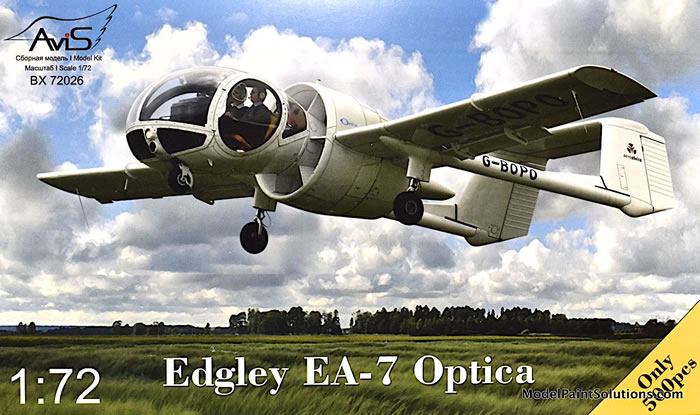
Avis, 1/72 scale
S
u m m a r y : |
Description and Item No.: |
Avis Kit No.72026 - Edgley EA-7 Optica |
Contents and Media: |
45 parts in grey styrene (not all are used), 5 in clear, 18 in PE, masks, and one decal sheet with markings for two airframes. |
Price: |
£20.58 Plus Shipping from Hannants |
Scale: |
1/72 |
Review Type: |
First Look |
Advantages: |
Conventional engineering and a low parts count suggest a relatively quick build. |
Disadvantages: |
Being a limited run kit, extra effort will be required for parts cleanup and test fitting. The canopy will also require buffing prior to us. |
Recommendation: |
There’s going to be some worked involved as there is with any limited-production model. In addition, assembly of the cockpit/cabin pod within the wing halves may require extra patience but the result will be a novel and seldom seen kit to say the least. Recommended! |
Reviewed by John Miller

The Edgley EA-7 Optica is a British light aircraft designed for low-speed observation work, and intended as a low-cost alternative to helicopters.The Optica has a loiter speed of 130 km/h (70 knots; 81 mph) and a stall speed of 108 km/h (58 knots; 67 mph).
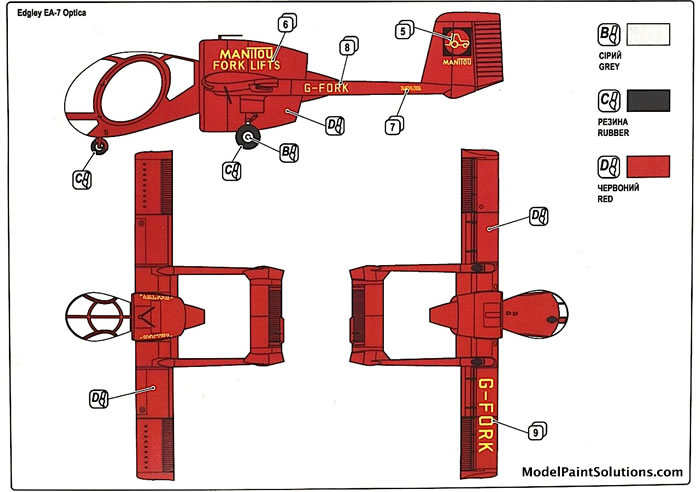
The Optica project began in 1974 with a company, Edgley Aircraft Limited, formed by John Edgley who, with a small team, designed and built the original prototype. The aircraft has an unusual configuration with a fully glazed forward cabin, reminiscent of an Alouette helicopter, that provides 270° panoramic vision and almost vertical downward vision for the pilot and two passengers. The aircraft has twin booms with twin rudders and a high-mounted tailplane and is powered by a Lycoming flat-six normally-aspirated engine situated behind the cabin and driving a fixed pitch ducted-fan.
Edited from Wikipedia
Being a limited production kit—just 500 have been produced—extra effort will be required to deal with flash and parts clean up. Similarly, the sprue gates are thick and some additional trial and error will be required to achieve a good fit of some components. That said the surface details are well done if not a bit thick in places and the low parts count and conventional engineering should make for a relatively easy build. A crucial aspect of the kit, the large-windowed cockpit/cabin, is well detailed with nicely molded clear parts but I’m getting ahead of myself.
The 45 grey plastic parts are conveyed on two small sprues.
The sprue gates are thick and work with files and sandpaper will be required to remove flash and freshen up parts.
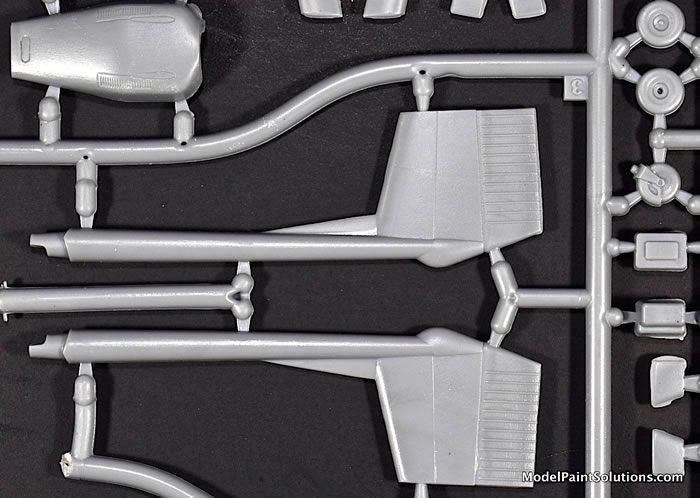
A single clear sprue carries the substantial portions of the model that comprise the cockpit/cabin. A nicely done PE fret provides 18 parts (mostly cockpit related).
Assembly begins with the engine nacelle and ducted fan. Next in sequence are the halved twin booms complete with corrugated rudders. With most of the airframe components assembled, the real meat of the build, the cockpit, now begins.
For many the focal point of this model (and 1/1 aircraft) is the large dragonfly-like cockpit. That being the case, the folks at Avis have provided sufficient detail right out of the box to assemble a convincing pilot’s office. Good thing too as much of it will be clearly visible through the large, multiple windows.
The three seats (pilot, co-pilot, and passenger) are each composed of separate seat backs and cushions which are augmented with nicely etched PE harnesses.
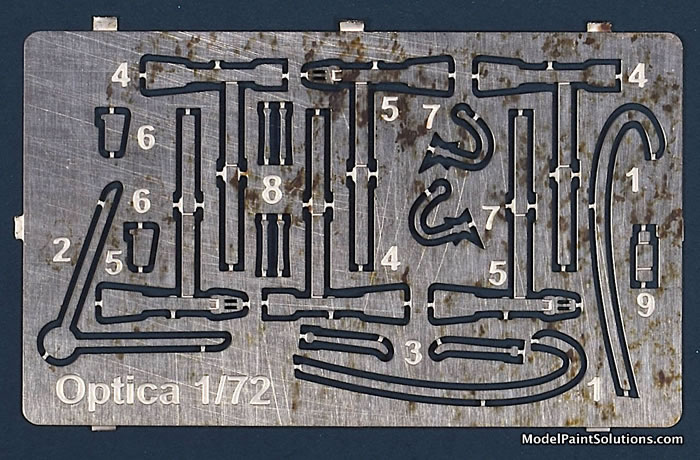
Control sticks and rudder bars are provided for the pilot and co-pilot seats. The single instrument panel is a bit rough and would benefit from additional detailing. Ditto that for the cockpit overall. Super detailers will see ample opportunity for improvements.
The completed cockpit is then trapped between the clear fuselage halves. The addition of the center window overlying the seats completes the assembly.
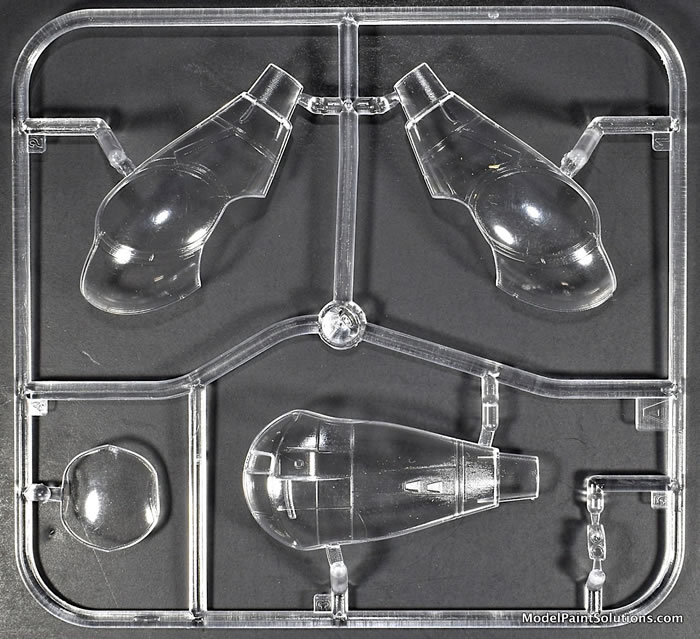
Six mounting stubs are then glued to the rear of the cockpit pod and serve to mount the pod within the wing halves. At the rear of this assembly is the engine nacelle with its ducted fan blades. This step may prove to be a bit challenging and require ample fitting and adjustments.
The twin booms, which are canted inward at the tops, are then added along with the halved horizontal stabilizer. Photo-etch strakes, just ahead of the boom attach points, are provided to dress up the wing.
Last up is the offset nose and main gear as well as a nice assortment of small airframe details such as photo-etch antenna blades and flap hinges.
Markings:
The decals, by Avis, are crisply printed with good registration and color density.
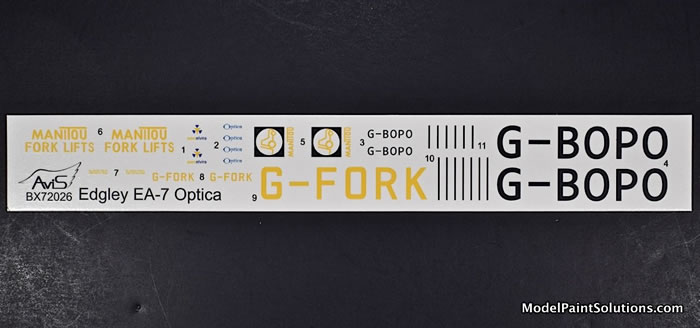
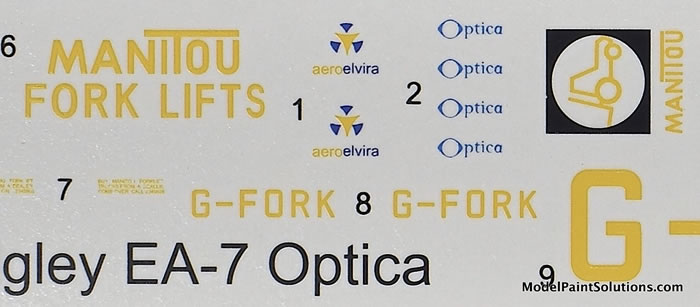
Markings for two airframes are provided as follows:
What a neat kit. There’s going to be some worked involved as there is with any limited-production model. In addition, assembly of the cockpit/cabin pod within the wing halves may require extra patience but the result will be a novel and seldom seen kit to say the least. Recommended!
--John
For more on this review visit Modelpaintsolutions.com
Review kit provided by my retirement fund, again.
Review Text and Images Copyright © 2021 by John Miller
Page Created 26 February, 2021
Last updated
26 February, 2021
Back to HyperScale Main Page
Back to Reviews Page

|
Home
| What's New |
Features |
Gallery |
Reviews |
Reference |
Forum |
Search